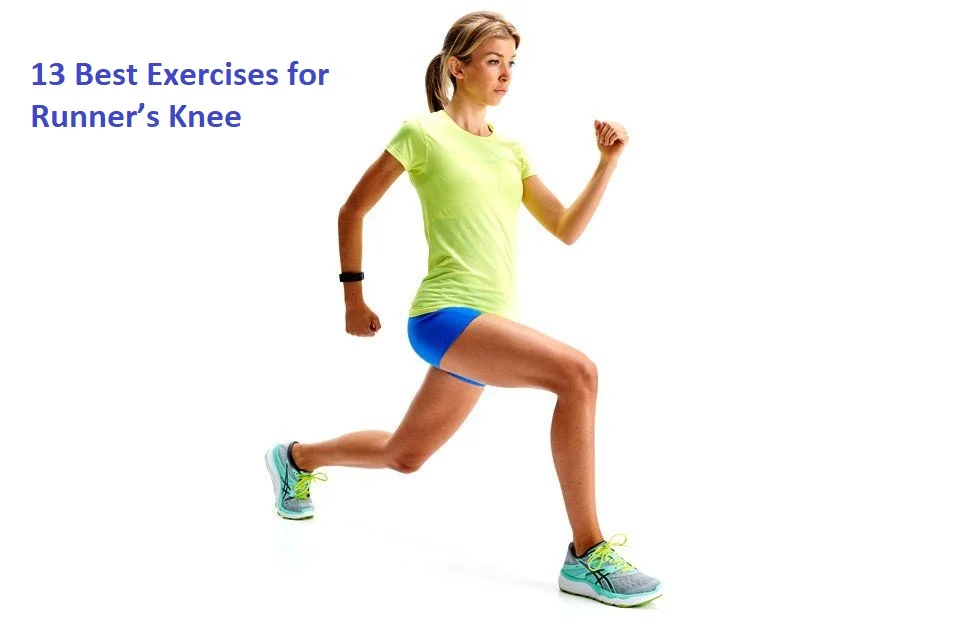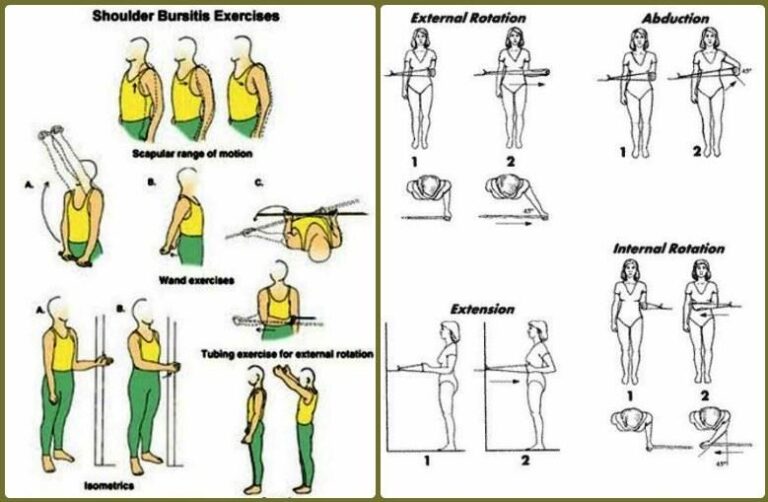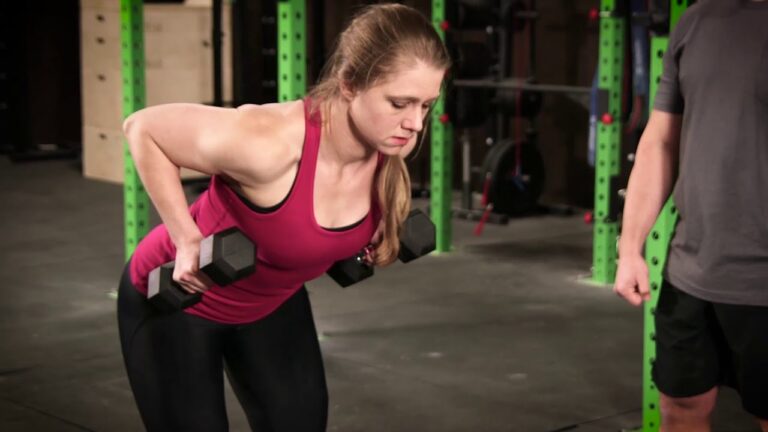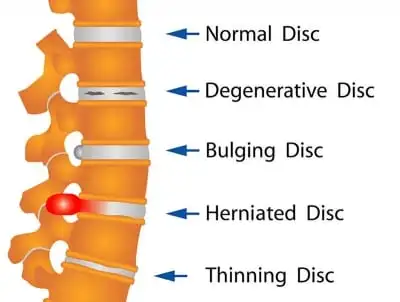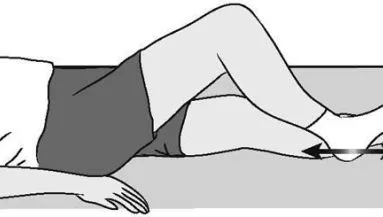13 Best Exercises for Runner’s Knee
Exercises for Runner’s Knee is an important part of your overall treatment program, that helps to strengthen your leg muscles and improve flexibility and overall stamina.
A common problem among athletes is the runner’s knee. You shouldn’t take stress about it. In reality, if you develop a runner’s knee, you can treat it with some exercise as well as you can prevent it with some precautions.
For the runner’s knee pain, attempt a variety of movements that focus on supporting the knee and hips. You may also stretch out your hip flexors and hamstrings. Runner’s knee is most frequently treated with physical therapy, which is also the most effective method. You can take part in daily activities with minimal pain if you receive physical therapy, which will help with posture and joint mobility. Strengthening exercises will stabilize the knee during running, as well as help maintain leg flexibility and reduce muscle tightness.
What is a Runner’s knee?
In the medical aspect, a runner’s knee is called a patellofemoral pain syndrome (PFPS). It occurs due to irritation of the soft tissues around the knee, which can include the patellar tendon, fat pads, and the synovial tissue that protects the knee joint.
Runner’s knee, or patellofemoral syndrome, is a damage that can induce dull, achy pain at the anterior surface of the knee and around the kneecap. It is common for runners, cyclists, and those people who more participated in sports involving jumping. After taking a break from exercise and applying ice to the area, the runner’s knee symptoms could get better the ice. Stretching and strengthening activities can be done at home.
Continue reading to find out exercises and other natural cures you might use. Consult a doctor if the pain fails to go away after a few weeks of at-home treatment or if it gets worse.
How to identify a Runner’s knee?
If you are suffering from the runner’s knee, you may feel pain in your knee:
- At a timed exercise or after exercise
- When you walk and do downstairs
- During squatting
- When you take a sitting position for a long period.
Common reasons for runner’s knee contain:
- Overuse of knee joint
- Muscle imbalances
- Knee injuries
- Prior knee operation
Most of the exercises explained below can be done on one or both legs. If you feel knee pain on one side, back off the stretch and skip that exercise.
For best results, try completing each exercise every day for 6 weeks.
13 Best Exercises for Runner’s Knee:
Quadriceps Strengthening
Many theories show that weakness in your quadriceps muscle, especially an area of the front thigh known as the vastus medialis obliquus (VMO), may lead to patellar misalignment and PFSS.2 Performing to strengthen your quadriceps can be an effective part of your training program for runners’ knees.
The simple way to boost your quadriceps is with the quad set exercise.
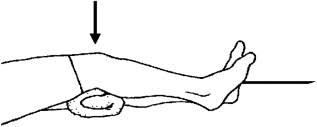
- To perform this quads set you have to take a supine lying position and put one towel under the knee.
- Push your knee down into the towel by contracting your quadriceps muscle on the front of your thigh.
- Hold this for seven seconds, and then relax.
The short arc quad is another activity that can assist you to improve the quadriceps muscle and supporting your kneecap.
- To start this exercise take a supine lying position and put a soccer ball or paper towel roll underneath your knee.
- Extend your knee fully by holding the back of your leg against the ball.
- Keep your knee extended for five to eight seconds, and then slowly release.
- Repeat this exercise for 10 to 20 repetitions, two times a day.
Straight Leg Raises

- By maintaining your knee in a safe, comfortable posture, this exercise is a great way to build your quadriceps and hip muscles. During this exercise, your knee joint should stay locked, decreasing tension and strain (and pain) about your kneecap.
- To start this exercise you have to lie on your back with one knee flexed and one knee extended.
- Contact the front thigh muscle when lifting the extended leg about 15 inches off the floor.
- Keep your leg straight up for 5 seconds, and then slowly drop it down.
- Repeat the leg lift for 10 to 20 repetitions.
Side leg raise

- To perform a side leg raise you have to lie down on your left side on the floor or a in a bed. Maintain a straight posture with your feet placed on top of one another and your legs extended.
- To support yourself, either flex your elbow and place it under your head with your arm straight or cradle your head in it. For further support, extend your right hand in front of you, or place it on your hip.
- As you breathe out, gently lift your right leg off the lower leg. When you feel your lower back or obliques flex, you should stop lifting your leg.
- Breathe in and lower the leg back down to meet the left leg.
- Do this 15 times, then switch to the opposite side.
Prone leg raise
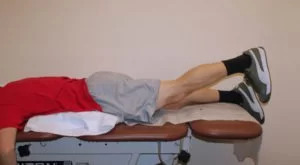
- To do this exercise, you have to lie on your abdomen with bilateral legs straightened and both arms by your side or down to your head to take support.
- Slowly tighten your abdominals and your knee should be straight. then slowly elevate the left leg up towards the roof.
- You must extend your knees and your thighs raise from the floor. maintain your leg extended upward side in the air for two seconds, and then gradually take your leg down to the mat.
- Keep sure you will not turn your back or pelvis while raising your leg.
- complete this exercise for 15 repetitions, and then do this exercise on the opposite leg.
Standing quad stretch

- To get this stretch you have to stand straight.
- Get behind your body to hold your right foot with your right hand. Bring your right heel up to your glutes, or as much as it does not cause discomfort. If you want to take support then stand near the wall.
- Hold your right knee in close as your stretch.
- Hold for thirty seconds, then switch to the left leg.
- Repeat the stretch on the left side.
- Do 2-3 sets on both legs.
Lunges

- To perform a lunge you have to Stand tall with feet hip-width separated.
- Step forward with your left leg, far. Begin to shift your weight ahead so the heel hits the ground first.
- Lower your body until your left thigh is parallel to the ground and your left shin is vertical. It is ok if the knee shifts forward a little as long as it does not go past the left toe.
- Press into the left heel to drive back up to the beginning position.
- Do it on the opposite side.
Standing calf stretch
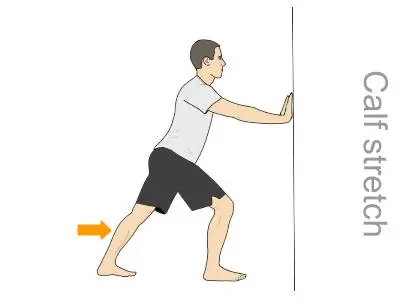
- To start this stretching you have to Stand facing a wall. Place out your arms so your hands are pushing the wall at a comfortable space. Hands should be put at eye level.
- Hold the heel of the leg with the affected knee flat on the floor.
- Move the different leg forward with the knee flexed.
- Lean gradually towards the wall while rotating the leg that is stretched and having pain until you feel a stretch in the back of your lower leg muscle
- Maintain for 30 seconds, then stand back vertically.
- Do it 3 times.
Step-ups
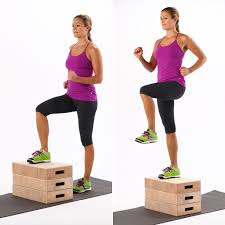
- To start this exercise you need a table or stand in front of stairs. Position your right leg on the stair.
- Raise your left leg in the air and hold for 2 seconds as your right leg extend and tightens.
- Return the left leg to the ground slowly.
- do it 10 times, then do this on opposite legs, putting the left leg on the stair.
- Steps can be painful if you are undergoing an injury. If steps irritate your knees, skip this activity. After you heal, this exercise can be a good way to support your legs and glutes and lower the risk of injury.
Clam exercise
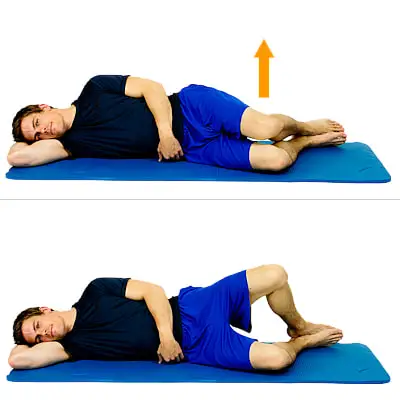
- To perform a clamshell exercise you have to lie on the right side with your hips and knees flexed and your feet stacked on top of one another.
- Slowly lift your top leg to the roof while your heels continue touching, forming a clam form.
- Maintain for two seconds, then lower the top leg gradually.
- Complete up to 15 repetitions. If it is not painful, do it on the opposite side. Do two sets on each side.

Wall slide Squats
- To perform this wall slide you have to stand back against a wall. Your heels should be about six inches in front of your hip bone, and your feet should be around shoulder distance separated.
- Go slowly, slide your back and hips down the wall until your knees are flexed around a 45-50 degree angle.
- Keep this position for about five seconds, then stand back up.
- Do the slide 10-15 times. complete 2-3 sets.

Donkey kick
- To perform a donkey kick exercise you need a yoga mat, towel, or blanket. come on all four limbs, with arms extended, knees under hips, and shoulders over wrists.
- Slowly raise your right leg behind you and raise it toward the back of the mat. Lift it to hip height and keep your foot bent.
- Maintaining your back flat, push your heel up toward the roof for a second, then drop it back to hip height
- Repeat ten times on the right leg, then switch to the left.
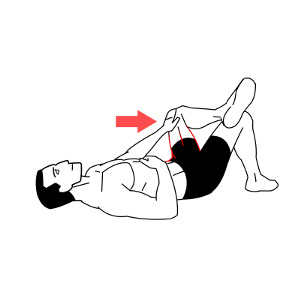
IT band stretch
- To get Iliotibial band stretches you have to take a standing position, with your right leg crossed over your left.
- With your left hand extended over your head, slowly start to lean over to the left until you feel a stretch.
- Keep for up to 15 seconds.
- Change legs and repeat. Complete 2-3 times per leg.
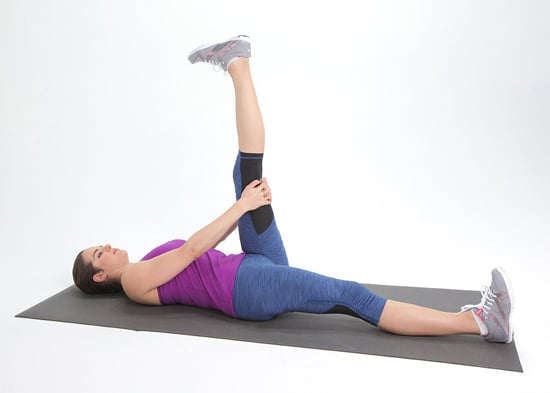
Hamstring stretch
- To get this stretch you have to take straight supine lying position with your left leg extended in front of you.
- flex your right leg. Cover your hands around the rear of your right thigh and gradually start to pull it toward you. You should feel the stretch in the posterior of your thigh.
- As you pull the leg near to you, try to extend the knee as much as possible, with your heel flexed and pointing toward the ceiling.
- Maintain this stretch for 40 seconds, then change your legs.
- Repeat up to three times per leg.
Other treatments and home remedies to try:
Additional remedies for runner’s knee may contain the following:
- Apply an ice pack over the affected knee multiple times a day.
- Consult your physician about assuming over-the-counter pain relievers, like nonsteroidal anti-inflammatory drugs (NSAIDs), if you are suffering from pain.
- Do low-impact exercises, like walking and cycling.
- Foam roll regions of the legs that are tight.
- Do knee-strengthening movements and see a physiotherapist, if required.
In occasional cases, you may require surgery if conventional treatments are not effective. the operative method may be required to realign the angle of your kneecap. Your physician can take an X-ray or MRI of your knee joint view your damage and select the best remedy to cure.
Is exercise an effective treatment for a runner’s knee?
- Ninety percent of people recover from rehabilitation exercises and stretches.
- According to a study issued in the Journal of Orthopaedic & Sports Physical Therapy, doing a series of knee- and hip-strengthening activities 3 times a week for 6 weeks may be a useful way to reduce knee pain and enhance physical training.
- Also, a 2007 study discovered that using personalized physical therapy exercises to boost the quadriceps and improve flexibility was more useful than knee braces or taping the knee. And, in some circumstances, strengthening activities may be more useful than consuming NSAIDs.
- A physiotherapist can assist you decide which exercises will be more useful for you based on your problem. They can help you find exercises to target and stretch specific regions. They will even be able to follow if you have a muscular inequality that ought to be fixed.
How long does recovery take?
To recover from the runner’s knee pain, you have to take some rest. You may require to leave sports or stop entirely until you feel better. Evade other movements that raise your pain, like moving up and down stairs, as much as possible. The recovery from the runner’s knee will vary for individuals. With rest and ice, your pain can decrease in 2 to 3 weeks. Or, you may require to see a physical therapist who can guide strengthening and stretching exercises to help you get back to running. See a physician if your knee pain does not go away after three weeks. You may go for an X-ray, CT scan, or MRI to define the reason for your pain.
Tips to prevent Runner’s knee :
It can not be possible to simply prevent runner’s knee pain, but the following efforts may help to relieve symptoms:
- Lessen high-impact physical exercise. Alternate running days with non or low-impact exercises, like swimming and yoga.
- Slowly improve mileage and intensity. Running over many miles and too fast may induce knee pain.
- To get a healthy lifestyle, and already have overweight puts more stress on your knee joint during physical exercise. If you are concerned, talk to your physician about a safe weight loss schedule.
- If you are doing regular stretching before the workout may help you to prevent knee pain.
- Choose weight-free shoes. You may require shoes with extra support or orthotic inserts. Athletics should also replace their shoes every run of 400 to 600 miles. Make sure your sports shoes fit and support your feet properly.
- Do not forget dynamic stretching and a warmup before exercising.
- If you perform static stretching (holding a stretch in one position for 30 seconds), it was best to perform that after your workout, not before.
Which exercise you should avoid if you have a runner’s knee?
- Avoid high-impact activities like running, jumping, and kickboxing.
- Avoid doing activities like full lunges and deep squatting. This will put a lot of strain on your knee muscle.
- Avoid over-stretching your knee muscles.
- Avoid full squatting exercises.
- Avoid side plank exercise , it may put strain on knee joint.
- Avoid full Leg extensions, it may hurt your knees. if you want to do this activity, you would like to perform a modified version, you can raise the leg halfway rather than to full extension.
- Avoid excessive knee flexion.
FAQ
How can you take care of an injured knee?
Give some rest to your knee in an elevated position by placing a pillow below the leg.
Apply an Ice pack over your affected knee to relieve pain and swelling.
Wrap your knee with a crape bandage or with the brace for support.
Take some painkillers when needed like ibuprofen or diclofenac.
Perform some stretching and strengthening exercises, mainly for your quadriceps muscles.
How much time does it take to treat a runner’s knee?
The runner’s knee will mostly need 4-6 weeks to fully treat if proper treatment is given and rest. However, due to the complexity of a Runner’s knee, the main cause may differ for every person.
Which position is best to sleep with a runner’s knee?
Give the affected knee some elevation: To stop your knee from swelling even further, place a pillow under it whether you’re sitting or lying down. If there is possible swelling, hold your foot elevated above your knee and maintain your knee beyond the level of your heart.
Can I do exercise with the runner’s knee?
Treating a runner’s knee is a matter of correcting whatever has caused the injury. When the pain has subsided, you should be able to resume exercise. Of course, you should resume training more cautiously in cases where you made training mistakes, such as ramping up your training too soon.
What is a runner’s knee called?
Usually, the area behind or adjacent to the kneecap is the location where the anterior part of the knee pain occurs. Therefore, it is known as patellofemoral pain or patellofemoral pain syndrome (PFPS) by doctors. Patellofemoral means the fact that it affects the region between the patella, or kneecap, and the femur, or thighbone.
How do you treat a runner’s knee naturally?
There have four easy ways to treat and Prevent Runner’s Knee:
1. Do some dynamic stretching before exercise and do some static stretching after workouts.
2. Many athletes have an inequality between strength and flexibility in their muscles.
3. Do some Strengthening exercises for your hip and knee muscles.
4. Apply Ice to decrease inflammation.

